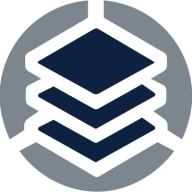

Splunk Observability Cloud and StackState are competing products in IT observability and monitoring. Splunk appears favorable in cost and support, while StackState excels with its feature set, offering nuanced insights and capabilities.
Features: Splunk Observability Cloud provides real-time monitoring, powerful analytics, and seamless integration capabilities. It offers comprehensive cloud compatibility and robust data visualization. StackState stands out with advanced topology mapping, real-time dependency management, and deeper insights for complex IT environments.
Ease of Deployment and Customer Service: Splunk Observability Cloud is recognized for its streamlined deployment and effective customer support. StackState offers advanced deployment configurations for complex infrastructures but is more intricate in setup. It emphasizes personalized customer service, contributing to successful deployments.
Pricing and ROI: Splunk Observability Cloud presents a more accessible initial setup cost, delivering solid ROI with its performance monitoring and pricing model. StackState involves a higher setup cost but offers distinctive features that deliver substantial ROI through deeper operational insights, potentially offsetting the initial investment.

Splunk Observability Cloud combines log search, data integration, and dashboards for seamless monitoring, enhancing infrastructure visibility and security. Its cloud integration and scalability support diverse environments, improving operational efficiency.
Splunk Observability Cloud offers comprehensive monitoring tools with user-friendly interfaces, enabling end-to-end infrastructure visibility. Its real-time alerting and predictive capabilities enhance security monitoring, while centralized dashboards provide cross-platform visibility. Users benefit from fast data integration and extensive insights into application performance. Despite its advantages, improvements could be made in integration with other tools, data reliability, scalability, and cost management. Users face challenges in configuration complexity and require better automation and endpoint protection features. Enhancing AI integration, alerts, and adaptation for high-throughput services could further improve usability.
What are the key features of Splunk Observability Cloud?In industries like finance and healthcare, Splunk Observability Cloud is implemented for application performance monitoring and infrastructure metrics. Its ability to track incidents and analyze machine data benefits network infrastructure, while distributed tracing and log analysis aid in tackling security threats. Organizations often integrate it for compliance and auditing purposes, enhancing visibility into network traffic and optimizing performance.
The StackState AIOps platform is a unique offering as we combine:
- Topology – view all components and all their dependencies, on prem and cloud;
- Telemetry – see all metrics, events and logs per component, regardless of its source;
- Tracing – insights into end-to-end customer journey at code level;
- Time travelling – travel back to any moment in time.
We make this possible through our unique version graph database (the so called 4T model).
Again, all combined in one model, one view. Future ready as new technologies will be launched and will be included into StackState’s AIOps platform.
On top of this platform we offer state of the art AI capabilities for:
- Root Cause Analysis;
- Impact Analysis;
- Predictive Analytics;
- Anomaly detection;
- Remediation and Automation
This helps our customer to drastically reduce Root Cause Analysis (RCA) and Mean Time To Repair (MTTR). All together this makes StackState the only vendor today which makes AIOps a reality.
We monitor all IT Infrastructure Monitoring reviews to prevent fraudulent reviews and keep review quality high. We do not post reviews by company employees or direct competitors. We validate each review for authenticity via cross-reference with LinkedIn, and personal follow-up with the reviewer when necessary.